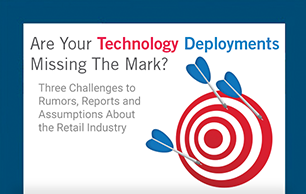
I absolutely love being an AI evangelist! As Head of AI in North America for Lenovo, a good portion of my job is dedicated to helping senior executives and enterprise teams think creatively about how they can leverage AI to make better decisions, drive speed and efficiency in their operations, and deliver an outstanding customer experience.
Here at Lenovo, our edge servers are powering the next generation of AI. We’re seeing usage skyrocket and applications expand across all industries. You can hear more about real-world applications for AI in a recent Telaid Tech Connect podcast, where host, Beth Bergmann and I share some cutting-edge applications for AI.
When it comes to driving optimal performance for your AI investment, here are some best practices to consider.
- Select the right hardware – Many AI software providers say they are hardware agnostic, but that doesn’t mean the hardware isn’t important. The truth is, it’s critical to the optimal performance of your AI solution. From the edge server that’s collecting all the data, processing it on-premises and sending the relevant data to the cloud, to the right GPU and/or CPU, the hardware has to be right. Specifying the wrong hardware can lead to a fire hazard, performance failures, needless expense, an unnecessarily large footprint, or simply sub-optimal performance of your AI system. This is where Lenovo comes in. We can spec a hardware package to ensure your AI solution will run at optimal performance, while simultaneously considering issues like space and scalability.
- Invest as OpEx vs CapEx – As devices’ end of usefulness shortens due to accelerating technology advances, capital investments in technology may no longer be the best approach. Why not consider leasing technologies instead of purchasing them? By investing in technology as an operational expense rather than a capital expense, it’s possible to use the latest technology for a pre-determined period of time, then automatically upgrade it to the latest, greatest version. This approach ensures that you have access to the latest technology, which keeps your solution optimized over time.
- Choose great ecosystem partners – Successful AI deployment depends on the collaboration of multiple partners. From the independent software vendor who builds the AI software, to the hardware provider, to the integrator who brings all the pieces together along with supporting infrastructure, and the channel partners who help ensure availability and delivery of devices, a variety of partners must collaborate for successful design, deployment and ongoing operation of an AI solution. When you work with Lenovo, we bring trusted technology ecosystem partners to the table, who are capable, established, dependable and can scale. We help facilitate those relationships, which makes enterprise AI much easier to deploy.
- Anticipate future needs – Even though we read all the time about the power of insights delivered by AI, companies are often amazed when they experience the benefits and ROI for themselves. In many cases, a business will have selected one or two specific use cases, applying AI specifically to those issues. However, once they experience the power of AI firsthand, they realize all of the other areas of their operations where AI could drive agility and increase visibility. The challenge then becomes that the hardware originally installed is insufficient to support additional use cases and the corresponding volume of data. In a surprising number of cases, physical space is also a challenge, particularly in retail and QSR settings, where office space may be limited. The best idea is to anticipate short as well as long-term goals for AI and to choose an edge AI server that accommodates multiple use cases, occupies a compact space, and will “futureproof” you as your appetite for AI increases.
As you embark on your exciting AI journey, feel free to reach out to me on my cell (404) 434-5166 or at ahuels@lenovo.com. I love helping enterprises make AI easy, fun, and rewarding to deploy!




